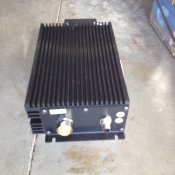plasmadrive
Full time elf
logandc99 said:plasmadrive said:You guys do know that those supplies are not meant to be mounted in that tight of an enclosure, right? I suppose if you only play flashy blinky you should be ok since the duty cycle is pretty short, but man It sure seems weird watching everyone post about something that is so not right... LOL
It's always great to get constructive criticism ..... although sometimes it can be tricky spotting the constructive part.
For those of us "playing flashy blinky" and making such "weird" and "so not right posts" about the enclosure setups, it would be great to get a pic of one of your enclosures with power supplies and ventilation so we can see how it should be done. It's would also be great to get an idea of what the temp should be kept below within the enclosures to make sure the power supplies don't get damaged. The air temp tops out at about 18 degrees Celsius when the lights go on here around 9pm. As stated in an earlier post in this thread ( a reply to a constructive query), I have ventilation at the base of the enclosures ( see pic below) but I am assuming from your comment that this is clearly not enough.
Look forward to seeing pics of your setup and getting some details about where I am going so wrong.
Any other helpful feedback from others on this matter is also greatly appreciated.

I just figured out how to find posts that I replied to.. Sorry for the delay.
The reason it is weird for me is that I have a UL 508A industrial panel shop. We have to build everything to worst case. I am just not used to seeing power supplies crammed in such small boxes.
As an engineer I know these setups are far outside the normal conditions that these supplies are made to handle, but I also understand that due to the nature of what we do in this hobby we don't stress the components even close to their max (for the most part). that is why my qualifier about "playing flashy blinky"
You wanted to know what I do for my supplies, OK.. I cheat, I use real wet location rated power supplies and let them be outside in the weather. I also use weather proof DC-DC converters for lower voltages. I know everyone can't do that, but this is what I do.
And BTW, I got about 100 of those supplies thinking I would help the hobby guys with low cost supplies.. I have been selling them to many for very cheap... so I am trying not to just sit on the side lines and watch.





